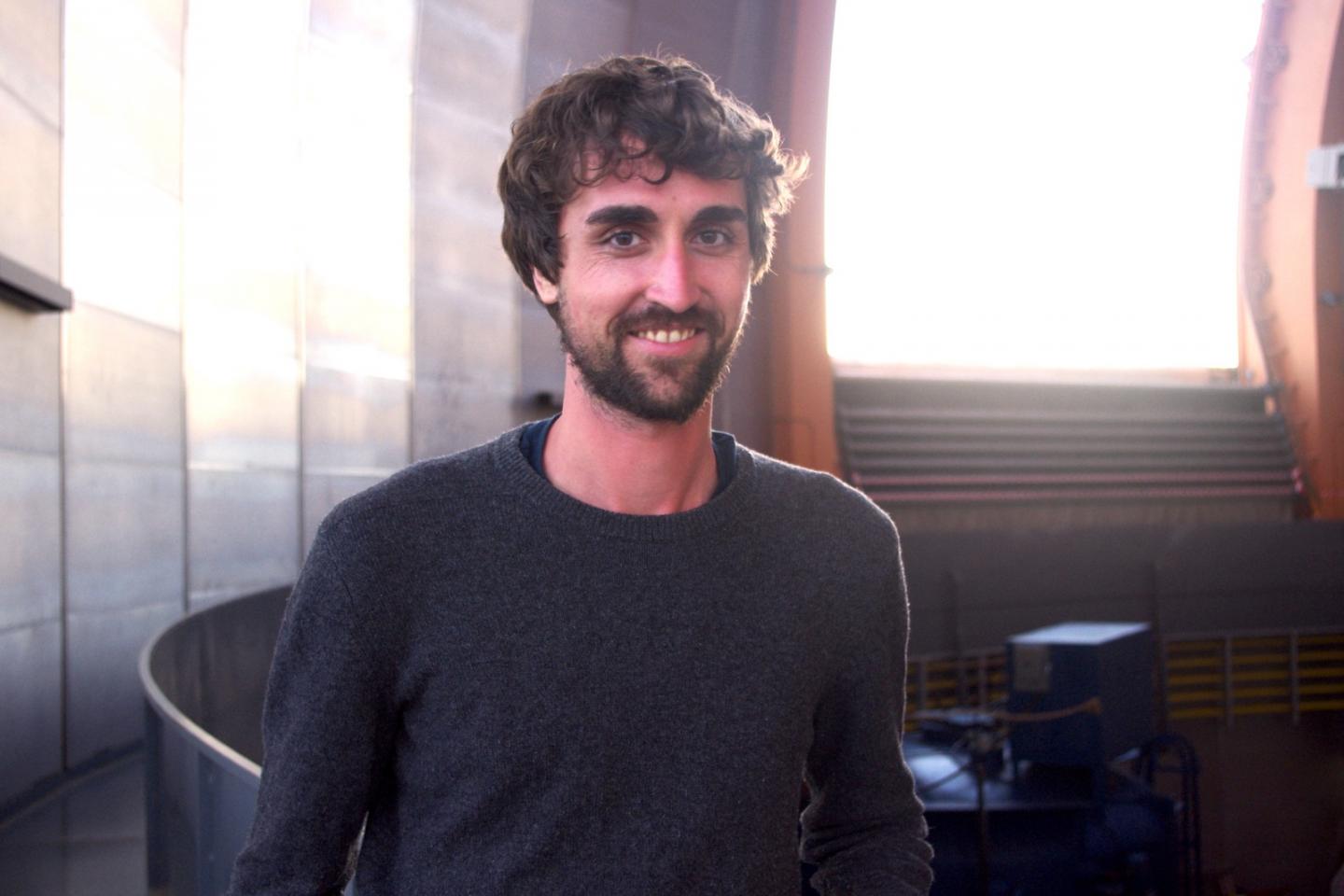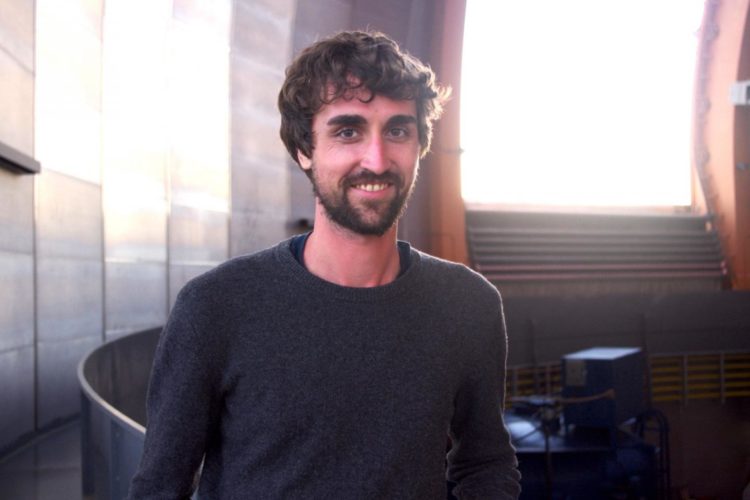His work aims to deepen our understanding of dark matter, dark energy and other secrets of the universe.

Credit: Andrés Plazas
Daniel Gruen, who studies how massive objects bend light from distant galaxies, has been named a 2019 Panofsky Fellow at the Department of Energy’s SLAC National Accelerator Laboratory. The focus of his research is to unravel some of the greatest mysteries of modern physics: What is dark matter? What is dark energy, and how is it accelerating the expansion of the universe?
The fellowship, given to exceptional early-career scientists, provides generous funding for five years of research and an opportunity for continuing appointment at SLAC.
“This is an incredible time in cosmology,” Gruen says. “We have indications that our model of the universe is incomplete and we’re only beginning to understand some of the physics out there. But at the same time, we’re building experiments that might help us find answers.”
The matter we can actually see makes up only 5% of the universe. An invisible form, called dark matter, accounts for 27%, but scientists have yet to identify its components. And more than two-thirds of the energy in the universe is thought to consist of a mysterious substance known as dark energy that causes the universe to expand at a faster and faster rate.
“Daniel has been one of the leading early-career scientists in the world pushing forward the techniques to learn more about dark matter and dark energy with large surveys of galaxies like the Dark Energy Survey and the Large Synoptic Survey Telescope,” said Risa Wechsler, director of the Kavli Institute for Particle Astrophysics and Cosmology (KIPAC), a joint institute of SLAC and Stanford. “We are thrilled to have him at SLAC as a Panofsky fellow during this exciting time for survey cosmology.”
Searching for answers with weak gravitational lensing
Gruen came to SLAC in 2015 as a NASA Einstein fellow after earning a PhD and doing postdoctoral research at the University Observatory Munich and the Max Planck Institute for Extraterrestrial Physics in Germany.
As a Panofsky fellow, he will continue down a research path he began as a graduate student, using a technique called “weak gravitational lensing” to make extensive and accurate measurements of large-scale structures in the universe. He will be working with a core team of students plus a postdoctoral researcher, and also interface with hundreds of other scientists across many institutions and continents.
Weak gravitational lensing describes tiny distortions in how we see a distant galaxy. These distortions occur because the galaxy’s light doesn’t get to us in a straight line; its path is bent by the gravity of massive objects, made of normal and dark matter, that are located along the way. Analyzing the small lensing effect is a cumbersome, but accurate way of measuring the distribution of mass in the universe.
This subject is familiar turf for Gruen, who for the last several years has served as co-coordinator of the weak lensing working group of the Dark Energy Survey (DES), the leading experiment of its kind to date. The survey’s researchers analyzed light from 26 million galaxies to study how structures in the universe have changed over the past seven billion years – half the age of the universe.
Unraveling ancient mysteries one photo at a time
Some 14 billion years ago, when the universe was young, it contained very little structure – just an extremely hot, dense soup of plasma with little variation from place to place, Gruen explains.
At some point, the soup cooled down enough for matter to clump together and give birth to the first stars, and eventually grouped into larger and larger structures, galaxies and clusters of galaxies. But how exactly did these structures evolve over time? And how can scientists observe them when most of the matter in them does not give off or reflect light?
One piece of the puzzle is dark matter, which can only be seen by observing its gravitational effects on the rotation of galaxies, for instance, or on the path of light passing by. Scientists can learn a lot about dark matter by precisely measuring how massive objects deflect the light of galaxies that are farther away.
“DES and its successor experiments, which I will continue to work on, follow an idea that’s quite simple,” Gruen says. It begins by taking a very deep, sharp, large picture of a patch of the night sky using a telescope outfitted with a very powerful camera. In this picture are billions of galaxies and enormous clusters of galaxies. The team catalogs these structures and analyzes their properties, leading to a treasure trove of data that helps them better understand how the universe works.
Gruen and other scientists of the international DES collaboration have photographed and pieced together a mosaic image of approximately one-eighth of the night sky, which they are continuing to analyze. He has also been using machine learning and other data science techniques to develop new statistical methods for making more accurate weak lensing measurements.
Getting an even closer look
An even more powerful survey will begin in a few years, when the Large Synoptic Survey Telescope (LSST) goes into operation in Chile. Its 3,200-megapixel camera is now under construction at SLAC and will allow astrophysicists to take an even wider and deeper look at cosmic structures.
“The increasing amount and quality of data from DES, and LSST in the future, is key to making new and better measurements of structures in the universe,” Gruen says. “We will use these new measurements to understand the fundamental physics shaping the universe. That’s what I will be working on with my group and collaborators in the next few years, and I’m so looking forward to it. “
SLAC is a vibrant multiprogram laboratory that explores how the universe works at the biggest, smallest and fastest scales and invents powerful tools used by scientists around the globe. With research spanning particle physics, astrophysics and cosmology, materials, chemistry, bio- and energy sciences and scientific computing, we help solve real-world problems and advance the interests of the nation.
SLAC is operated by Stanford University for the U.S. Department of Energy’s Office of Science. The Office of Science is the single largest supporter of basic research in the physical sciences in the United States and is working to address some of the most pressing challenges of our time.
###
Media Contact
Glennda Chui
[email protected]
Original Source
https:/





